At mudding… there I said it and I feel much better. Well, not really…
We’re taping and mudding a very tough basement with bazillions of soffits, niches and generally PITA details. Agonyyyyyyyyyyy.
I’ve read Ferguson’s book… (and watched his DVD)… and I s*ck. I obeyed ObiWan Paulson and bought a curved trowel… and I still s*ck. I thin the mud down and it just means more on the floor. We have 2 coats on, sort of…I’m sure I’ll wind up sanding 50% of it off again. I’m sick of getting all bent out of shape at the very smell of compound so…
Please …tips… suggestions…euthanasia… anything…
PaulB
Edited 4/16/2008 9:16 pm ET by PaulBinCT

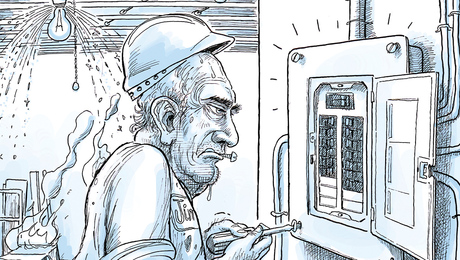

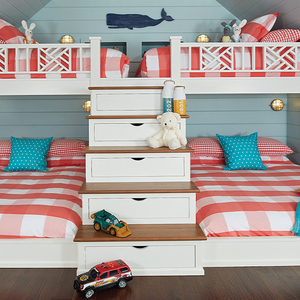
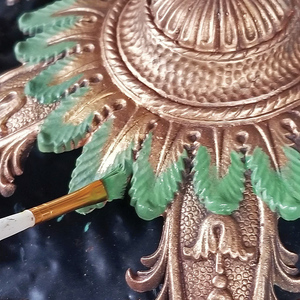
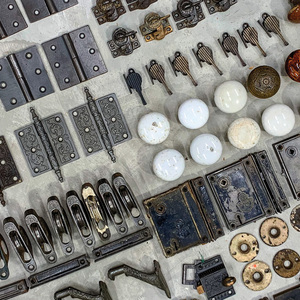
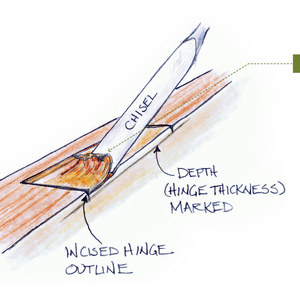







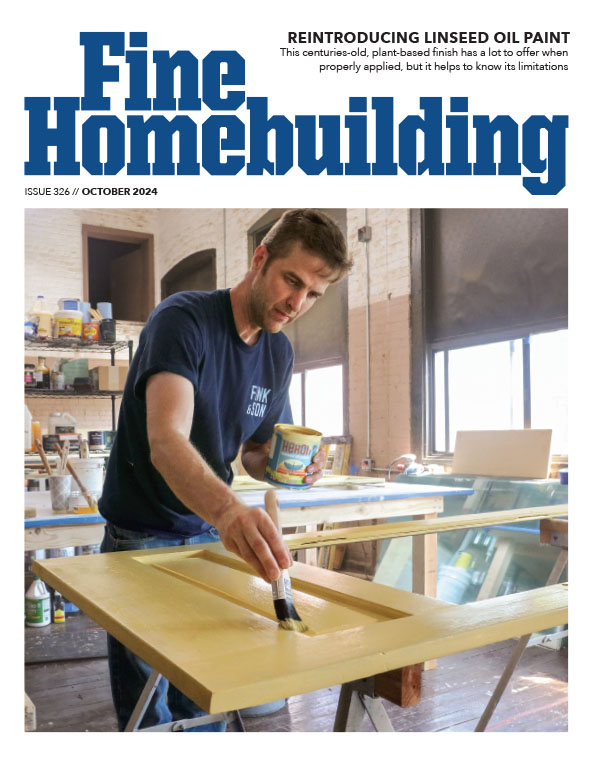





Replies
I too feel your pain, I did my attic that had so many seams, I don't think I'll do it again.
Look ma, no jigs!!!
Morphine.
Both IV drip and the MUSIC.
Never look back.
Spheramid Enterprises Architectural Woodworks
"Welcome to Poo-ville, can I have your socks?
Seriously Folks, I need a home for 3 lovers of your life.
Someday there'll be a cure for pain. That's the day I throw my drugs away.
Makes me feel like swimming when I wonder why can't love be blind.Spheramid Enterprises Architectural Woodworks
"Welcome to Poo-ville, can I have your socks?Seriously Folks, I need a home for 3 lovers of your life.
Buena, buena, buena, buena, good good good.
RIP Mark Sandman.
Most nights are crystal clear, but tonight it's like he's stuck between stations.
3 options
1 - practice
2 - Marlboros and Mountain Dew (definate local culture)
3 - Quit caring
Real trucks dont have sparkplugs
I've been doing 1)...and 2) (does Pepsi count?) and we know if I could do 3) I wouldn't be here ;)PaulB
Darn,
I was in New Haven this weekend for my 45th high school reunion.
Killed a couple of hours visiting the old neighborhood.
I would have tried to look you up if I had known you were in need.
Might have P. O'd the wife if I took a work break during a mini vacation but she'd get over it.
Wow... small world! Hillhouse?PaulB
Yep. Hillhouse.
You?
Went to HS in Newtown...lived in New Haven since late 70s.PaulB
What BigBill said--don't use so much mud. Knock off high spots between coats by just running your knife over them. Sand only before final coat. I often end up doing more than three coats. I'd rather have to add mud than sand off too much.
I use a second big knife as a hawk and constantly scrape both clean on each other. And I use the second knife to position a nice "bead" of mud on my knife so it's where I need it. Lay the knife down (low angle) to deposit mud, lift the handle (high angle) to remove mud.
Keep your bucket of mud CLEAN--keep scraping the sides as you go to keep mud from drying and falling into the rest of the mud. Never put mud back in the bucket once it's been in a tray or on your knife. This keeps dry lumps or other trash out of your mud and prevents those annoying streaks.
There are lots of other little tricks, but just these should help get you started.
Here is an old link that i saved with a lot of usefull DW install info in it.
45815.1 (this is the original link #, let me know if it comes up for you)
Dan
Thanks Dan...skimming (ugh ;) ) through it now.PaulB
After a few reads of that link the tips will be .... well embedded like tape or sumpin. ;-)
They can't get your Goat if you don't tell them where it is hidden.
The real trick to mudding is to not put on too much. With practice you will get better.
Don't worry about thinning the mud. If it seems too thick add a few drops of water to your hawk or mud pan and mix it in. You should need to just touch sand between coats of mud if at all.
The real trick to mudding is to not put on too much. The real trick to mudding is to not put on too much. The real trick to mudding is to not put on too much.
Oh - I thought you meant the other DW - I stink at that one.
Forrest
I stink at both DW's....
at least one of them doesn't care, though.
A La Carte Government funding... the real democracy.
Was ist los, mein freund??
I get Myron to send you that nice dvd and you are still not making the nicey nice with the taping and the mudding?
Have you tried the d-mix? Just kidding.
But in all seriousness, have you tried this?
http://www.texmaster.com/magictrowel.html
Supposed to work wonders.
Taping needs lots of light, daylight if possible. In a dark room, like a basement, I'd use three worklights; left, center, right...the outer two angled to overlap the center. They should be at the four foot level, one hundred watts each as a minimum.
Good technique comes a lot faster with proper light because you can see precisely what is happening in relation to what you feel through the knife or trowel.
Calm down...take a deep breath.
I'm not that good but even I can eventually get it done. You sound like your going to have to settle into a five step mud process. Stop fighting that thought and just start putting on thin coats as has been suggested.
I don't sand between coats. I just hit everything with a stiff scraper.
I like to add a bit of dishsoap.
I've used a hawk and trowel and I've used a box and knife. They each have their advantages. Try both methods.
If your slopping too much material onto the floor, take smaller bites when you're loading. Pay attention and don't load the bottom of your blade. Leave an inch bare.
I'm not that good, so settle down till better advisors chirp in. Calm down, accept your fate and next time tell them "no details".
Bob's next test date: 12/10/07
"Please ...tips... suggestions...euthanasia... anything..."
sure.
learn to make money on it.
find a good drywall sub that'll do smaller projects ...
pay what ever they charge ... then add 20% and sell it.
I suck at dw too ... luckily ...
there's lotsa other guys who don't.
and some who'll take on smaller jobs.
Jeff
Buck Construction
Artistry In Carpentry
Pittsburgh Pa
If you are serious about continuing these endeavors, Big Bill and Hudson Valley nailed it.
On the next taping job, you might want to consider the fact that doing everything might not be cost effective. Personally I'm pretty decent at taping, a light sanding is all that is needed at the end, but it always takes too long. I now use a guy who is fast, clean, does great work and charges about double what I would consider a fair price. All things considered, he's a bargain.
"Perfect is the enemy of Good." Morrison
Here's what I always tell folks trying to master mud:
1) Think ballet, not boxing. (Long, smooth strokes, not jabs.)
2) You can't put on too little (except for under the tape -- you don't want to go too light there), but you can easily put on too much.
3) Related to No. 2, don't worry about low spots -- just don't leave high spots. You can fill low spots with the next coat without sanding, but high spots are a PITA.
4) Butt joints are the biggest issue for beginners, so just avoid them by planning your layout carefully or use butt backers, like this: http://www.ezbacker.com/rock_splicer.html
5) Take your time. You're not a pro, so it's gonna take you longer. For intersections and corners, do one side, let it dry and then do the other. If it takes 4 coats, no big deal.
6) Rent a PC drywall sander and vac. That helps A LOT.
The biggest problem most people have is that they try to do too much with each coat.
Mike Hennessy
Pittsburgh, PA
I second what Danno and the others have said about cleanliness. Junk in your mud or the back side of your knife makes a "clean" coat impossible.
Remember you are filling low spots and hiding the high spots. In other words, once taped, don't add mud on top of butt joints until your final coat.
Don't waste time trying to fill screws with one coat.
To get flat feathered edges you need to apply more pressure on the outside edge of your knife.
Taping is a series of steps, I go 4" (tape), 6" fill, 8" finish, 12" butts.
I like EasySand 90 especially for basements- bucket mud often takes way too long to dry properly.
The best way to learn is watch a pro in person.
Jim
The awful thing is that beauty is mysterious as well as terrible. God and the devil are fighting there, and the battlefield is the heart of man.
- Fyodor Dostoyevski
i'm in the same club,everyone tells you how to do it,you can read whatever ,sounds easy till i get to doing it.
but i tried something different in a 600 sf room the other day that went pretty well. put the paper tape up with a banjo,went pretty good except mud leaking out of banjo made a mess. then on the next coat i used a roller and rolled the mud on,then hit it with a 6" knife,then next coat used the roller and hit with a 10.came back with a roller again with the mud thin to real thick paint,then used one of those magic trowels and it left it in pretty good shape.the best i've ever done at least.
i did rent a pc sander because sanding a ceilingis almost torture for me, it worked well and it's on my next tool hit list.
if a man speaks in the forest,and there's not a woman to hear him,is he still wrong?
Tell more about this roller process. It sounds messy and impossible. Bob's next test date: 12/10/07
CAUTION:IF YOUR A REAL DRYWALLING READING THIS POST COULD CAUSE HARM FROM YOU LAUGHING YOUR A OFF AND FALLING OFF YOUR CHAIR............
when i bought this magic trowel,the instructions talked about using the roller so i decided to give it a try.if you don't know what this magic trowel is it's about 15" long squegee that i got at s.williams.
so as far as mess goes thats the big advantage,when i'm spreading mud i honestly lose 15% to the floor. so with the roller you thin some mud,not alot but some,throw it in a roller pan and start rolling. just roll your seam back and forth 3-4times to even the mud out then hit with the knife. i was surprised it worked pretty good. like i said last coat i used the trowel to really feather it out.
oh,the roller cover is toast when your done. LARRY ,THE ROLLING DRYWALLERif a man speaks in the forest,and there's not a woman to hear him,is he still wrong?
15%?
Holy cow!
always,You're really going to have to work on that.
You shouldn't be getting anymore than 12%.
Click here for access to the Woodshed Tavern
Click here to visit the beginning of Breaktime
Edited 4/17/2008 1:04 pm ET by rez
lets see that 600sf area = probably 1200' of total surface,used 2.5 50lb boxes=125lbs. so at 15% thats like17lbs of mud on the floor. maybe i'm a little light on the 15% estimate going by the mess i had to scrap up.... larryif a man speaks in the forest,and there's not a woman to hear him,is he still wrong?
Tips?
Sub it out!
I was once where you are, I used to put on too much mud with each coat. The answer, as others have said, is to go light on each coat (except under paper tape, and don't use fibertape) until you get enough practice to know how much mud to apply without applying too much. Lighter and more passes is better than heavy and sanding.
I used to try to get each coat perfect. This was the biggest hurdle for me. Taping is a process. Leave small dips and voids in the first pass, they will easily fill on the next pass. If you get a void or a drag mark or a blemish, move on - knock down the imperfection with a 6" knife after it has dried and coat again - no sanding if you didn't put too much on to begin with. Not productive trying to get three perfect passes.
Don't overthin the compound, you want it to be smooth and lump free, but have body. Too thin, and it won't stay on the tools or fill voids.
If you have to sand between coats, you are putting too much on.
Practice, practice, practice.
There are two kinds of people who never amount to much:
those who cannot do what they are told, and those who can do nothing else.
Good point about the futility of trying to get each coat perfect. I've found (now if I would only listen to my own advice!) that the more you fuss with it, the worse it gets. Move on and resolve to fix it after it dries.
When I was in Mississippi, one guy was very good--each coat was like the final coat, smooth and nice, but what a waste of time! You're going to cover at least the first two coats, so making them smooth and perfect is a waste of time. If you're doing your own house, that's fine, but when you are trying to get a job done because you only have so much time, perfection is something you approach more and more with each coat (and never achieve!). I was disappointed to go back to one house we did--I had to leave on Monday of the last week and the crew that replaced me was there to paint. I took an hour or so before going to the airport to show them how to sand and smooth the little touch up areas before they painted. I was told later that they actually messed up the stuff I had done and painted without touching a lot of the rest--it showed. But the people are living in the house and it looks okay--just not as good as I'd like it to look!
After you break over the learning curve, it seems the less you try the easier and better looking it gets.
I do an awful lot of patching and repair nowadays, where I need to make invisible joints and texture matches, so still learning little tricks every time.
I use mostly setting compounds. I never/very rarely sand, and never much. I wet sand for blending on patches.
And I can't help checking out the drywall finish everywhere I go.
There are two kinds of people who never amount to much:those who cannot do what they are told, and those who can do nothing else.
""I wet sand for blending on patches."" Do you use a damp sponge for this?
They can't get your Goat if you don't tell them where it is hidden.
Yep.
I used to use a grout sponge, but I found something better:
View Image
There are two kinds of people who never amount to much:those who cannot do what they are told, and those who can do nothing else.
When I was in Bayou La Batre, a guy on another crew on another job, but thier crew was staying at the same church camp we were, said he puts the mud on (one stroke up with the knife, one stroke down), lets it dry "just the right amount" and then dips a terrycloth towel in a bucket of water and wrings it out "just the right amount" and rubs it one stroke up the mud and one stroke down and that's it--that's all he does for mudding drywall. Seemed a little hard to believe. I have tried sponges and thought the results sucked, so wasn't eager to try the towel method. I suppose it could work--especially if you aren't too particular how it looks!
I never heard that one, but you're right, don't think you could be too particular using that method. Seems like the damp towel mighta been better used on his forehead, make him lie down. :-)
The sponge sanding came about from doing repairs and patches, as opposed to new construction. The sponge allows you to take and really feather the last edge down, plus, no dust in an occupied house.
I wouldn't try to sponge sand a lot of joints. It is more of a finess trick.
There are two kinds of people who never amount to much:those who cannot do what they are told, and those who can do nothing else.
Well, i like smooth walls and i can't afford paying someone what it would cost to please me.
I have a 2x2 with another short section nailed to the bottom to make a "T" that i can brace against the ceiling and move quickly. To the brace, i attack three clamps lights (high/med/low) and they are all plugged into a short, sturdy, 3-outlet extension cord. The cords are all taped to the upright 2x2 to keep them from flopping.
I place it in the middle of the wall about 6" from the wall surface, facing the lamps all one way, braced against the ceiling. Mud the seams, then flip it the other direction down the rest of the wall and mud those. You can angle the top light across the ceiling to pick up any problems that your customers' ceiling light will find. <G>
I use mesh tape and setting compound for all but my final coat. And call me contrary, but i really like an inside corner trowel. Of all the toys, though, the light is the most important.
PS: I forgot the Poor Woman's PC sander: a car buffer, at least 10", is the bee's knees. Got one at Big Lots for $20...and i also use it to wax the Toyota!
Edited 4/17/2008 4:11 pm by splintergroupie
My rule is to never sand (very much). If you have to sand, other than a very light touchup, you're putting on too much mud. Better to do four coats if you have to than to do two and sand off a half-ton of mud.
A trick (better than the damp sponge) is to SCRAPE the previous coat with a broadknife before putting on the next coat. This knocks loose any lumps or ridges, and does so much more effectively than sanding.
Dan, I don't sand between coats, damp or otherwise. I use a knife to knock off ridges, etc.
The sponge sanding ( if necessary) is the last bit of feathering an edge from a repair to the original wall/texture.
There are two kinds of people who never amount to much:those who cannot do what they are told, and those who can do nothing else.
Edited 4/17/2008 4:36 pm by Heck
I do the final sanding with the naked palm of my hand...with my eyes closed. If I can't feel it, no one's gonna be able to see it.
I think you guys have given Paul a lot of good advice. I tend to use wider trowels and knives (6" for taping and screw heads, up to 16" for the last coat on butts) and I never thin the compound. 99% of the time I use standard compound, CGC when I can get it. Lite doesn't do it for me; it just doesn't 'work' the same way. After two passes over the mud, it starts to fall apart. I hate using it. If I'm in a tearing-arsed hurry for the stuff to dry, I'll use a 90-minute setting compound for the first two coats, and be real careful so I don't have to sand much before the final (drying-type) coat.
But big lights are essential. I'll put 2000 watts of work lights (four 500w halogens on two stands) in a room if I can fit 'em in there, and set a fan blowing out a door or window to exhaust some of the heat. You've gotta be able to see what you're doing.
Dinosaur
How now, Mighty Sauron, that thou art not broughtlow by this? For thine evil pales before that whichfoolish men call Justice....
I hear you with the lite mud. . . unfortunately, I'm dedicated to to the dust control formula, which is lite. Oh well!
OK Brethren of the White Powdered Hair (or scalp in my case):
Did the deed again today with much more success so I thought I'd report back. Here's what I was doing wrong (so far), perhaps it will help other mudhaters... of course I've still got a long way to go but:
A) Taking way too much mud on the knife (and hawk). Cut it in half and dropped 90% less, with much less squeeze out.
B) Much too steep a knife angle. I found that I really need the knife to be almost flat, probably 10 degrees from the horizontal. And a lot more pressure than I had been using. Spread much smaller amounts then went back to create a long even bed and "tooled" it for a feathered joint.
C) Took a deep breath and told myself there was no point in getting p*ssed off...it had to be done and there are only the two of us so...
Still can't get the hang of Eric's beloved humungous curved trowel, but as Linda Blair told The Exorcist... In due timeeeeeeeeee...
(oh and to the many that champion the PC sander, I own one and it's probably the only thing that keeps you from seeing me on a rooftop with a 30 ought six screaming "no moreeeeeeeee coats you hear meeeee...noooooooooo moreeeeeeeeee coatssssssssss")
Thanks to everyone for the suggestions and advice ;)PaulB
Still can't get the hang of Eric's beloved humungous curved trowel,
Although they look the same to the uneducated eye, concrete floats are flat; gyprock knives have that slight curve. The curved trowel (most of us call it a 'knife', even though it's not) is supposed to allow you to feather both sides of a joint while at the same time putting enough mud over the middle of the joint to cover the tape. In other words, it lays a humped bead of mud on the wall, but the hump is so shallow that you aren't supposed to be able to see it when it's all done. As you are finding out, you need to keep the blade almost flat to the wall, and use some real muscle on the final stroke. If you do it right, you wind up with an almost paintable joint after two coats.
But for a curved trowel it to work well, it's got to be wide enough. I use a 16" knife for butt joints, but even so that's not always wide enough. A good butt joint usually has to be 24" wide before the hump disappears.
Best advice I can give you is too late if you're already at the mudding stage, but it would be this: Hang your gyprock sheets vertically, so you don't have (m)any butt joints to do. That will simplify your life immensely...next time.
Dinosaur
How now, Mighty Sauron, that thou art not broughtlow by this? For thine evil pales before that whichfoolish men call Justice....
Yeah, I bought a 14" curved drywall trowel/knife per Eric The Drywall Meister. Now I guess I just have to put some more "umpf" in it ;)PaulB
You'll get it. Eventually, LOL....
Just remember, tho, that when working with a curved knife you are always laying down a bead of mud that's thicker in the center than at the edges. So if you're pulling the second or third coat down a butt joint, and doing one side of the joint at a time to widen it out to a real feather edge, you should be using a flat knife so you don't add a secondary hump on each side of the main hump over the tape.
I've got a 12" mud trowel (think 'spatula') for that.
Dinosaur
How now, Mighty Sauron, that thou art not broughtlow by this? For thine evil pales before that whichfoolish men call Justice....
Now I know why I've been tossing the past night or two..............49 posts and you've busted my ba**s how many times??
I oughtta.............
Taping; it goes in the folder of things that are not hard to do, but real eay to f' up.
It'll be over soon. Just be sure they get a "good painter".
Eyourcontractor@aol.com
Excellent! Thanks for the update. Once you learn the right amount of material to load, the job goes so much faster and easier and you don't get those frustrating "splatz". You've discovered the angle of the blade is important. Now you've got to give some consideration to the stiffness of the blade. If you're blade is too stiff, you've got to flatten it out more and there is less surface area of the blade riding along the mud that you are cutting. The blade doesn't pack the material, it cuts it, leaving a rougher surface behind. A more flexible blade is easier to work with. You let the spring in the blade put your pressure on the mud and it's easier to get a "fuller" fill. The stiff blade cuts it all off, the more flexible blade gets pushed up and away, leaving a slight hump in the center of the blade. Once you discover the right amount of pressure, it's possible to leave the exact amount "humped up" to finish sand to perfection in two passes. The final third pass is spotting the nicks and voids.I've never come close to doing it in three passes but I've know many guys that did it all the time. The best guy I ever watched used the hawk and trowel and could take a bite of material and walk at normal speed laying it perfectly on. When he got to the other side of the room, he'd reverse and clean everything up in one pass. I'd watch in amazement as he did a 12' room (tapered joint at the 4' level) in half a minute (maybe less). I've got a corner tool that embeds the tape and cleans the excess mud off in a perfect corner every time. That tool saved me more grief than any other drywall tool that I've ever owned. Bob's next test date: 12/10/07
I'm glad it's going easier. Another thought: obviously the trowel is all in the wrist, but you control the knife with your fingertips.
Hire it out. Life's too short to suffer at tasks other people are willing to do for a reasonable price.
Of course I hate it but do my own. I water the mud down a bit, use a mixer even though it's pre-mixed, and go with the three-step method.
Step one: fill all seams.
Step two: use a curved trowel to fill on either side of the first coat.
Step three: fill the middle in again.
Step four is to use the PC sander. Step five is take a shower and crack a beer.
Another little trick that I use is when you're checking the mud job for small imperfections, I use a spot or flood light held almost right on the wall casting the light across the mud. (That's not he trick, every body knows that). The trick is that the brass handle end on better taping knives (which i think is intended to beat down proud drywall nails) makes a good marking pencil to show where there are high or low spots. I just go over the wall quick, quick with the light in one hand and my "pencil" in the other encircling the areas that need further attention, wavy circle for low spot, smooth line circle for high spot, then come back and mud or sand my circles. It's a good way to not miss anything.
Subbing it out does work. . . except for when you have a job too small for that. Use this opportunity to learn.
I am one of those who does it slow but can get it done. Here are my thoughts:
- I only use a hawk. Something about the mud pan just doesn't work for me. If you do not have a hawk, get one; alternately, if you don't have a pan, get one. This is one of those preference things.
- Scrape your knife obsessively. The temptation is to keep swiping at the wall like some sort of mud monkey. Your knife needs to follow this pattern: pick up mud--->wall---->swipe on hawk, over and over and over.
- Loading the knife or trowel is important. You don't want a spoonful of mud on a 10" knife, nor do you want to try squeezing on a whole pint.
- If I'm not feelin' it, sometimes I do this: tape, fill, topcoat, sand, prime, touch-up. The primer makes the surface of the mud nice and hard, so you can apply lots of pressure with the knife, and then the sander, without messing up your good work. Then spot-prime. This approach can really help if I'm all thumbs. . . just don't prime over high spots!
I built this place pretty much by myself......even hung drywall 18' off the deck.......
BUT when it came to mudding I talked my wife into what I call skip trowling.......after tape and one muding.......I applied the mud in a weak stucco affect.
Hid everything and looked pretty good after it was painted.....my wife loves it and I saved myself the agony.